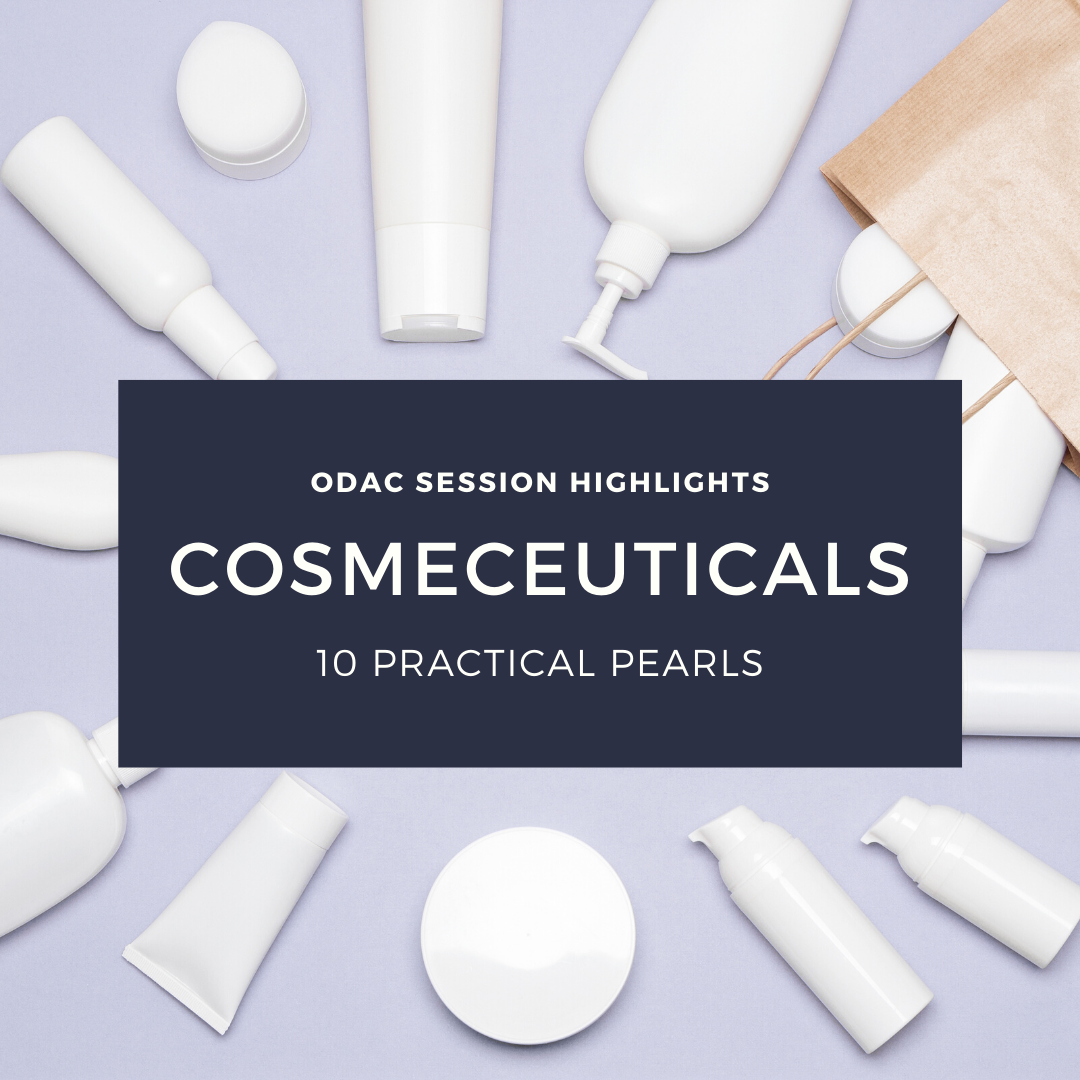As someone who was born in that gray area between the sunset of Generation X, and the dawn of Millennials, I can recall a time when the word “influencer” was not part of our every day woke vernacular. But today, influencers are everywhere—on Instagram, YouTube, SnapChat, and elsewhere—sharing personal narratives of their favorite life-changing products, diets, workouts, and hoping that people will buy, mentally, emotionally, and financially, into their personal brand. The problem is, oftentimes these heartfelt narratives, curated images, and pieces of advice are wholly bereft of truth. I am not suggesting that this is broadly done with malicious intent. But let’s be honest! Being informed requires a lot of effort, and it is naïve to believe that those who are promoting a product as an extension of their own self-promotion are putting in the work to ensure they are disseminating accurate information. Then there is Facebook. Hop on over to the dark corners of Facebook to find truthers, anti-vaxxers, flat-earthers, and Russian hackers warning you of the dangers of dihydrogen monoxide while simultaneously trying to convince you that burning down that 5G tower is a good and necessary endeavor.
We are confronted on a daily basis with a never-ending deluge of information pouring from endless forms of media. As physicians, it is our responsibility to be the gatekeepers of this information—we pass on the truth to our patients while trying to gently dislodge falsehoods from their grip. Not knowing the answer to a patient’s question about a cosmeceutical can instantly discredit you when there are social media personalities that purport to know it all (even if they don’t). As residents and early career dermatologists, our focus often revolves around building our dermatology knowledge base and skill set, and applying these successfully as we care for patients. There is often no explicit teaching about cosmeceuticals that we receive as residents, so it is up to us to both seek and evaluate this information on our own.
 At the 2020 ODAC Dermatology, Aesthetic & Surgical Conference, Dr. Kavita Mariwalla, who is the founder and director of Mariwalla Dermatology in West Islip, NY, gave a talk intended to both inspire and launch us on the journey to educate ourselves about cosmeceuticals. This post will cover ten pearls about cosmeceuticals that Dr. Mariwalla shared during her talk, the scope of which will hopefully give everyone a sense of the vast and carried topics out there that we need to educate ourselves on!
At the 2020 ODAC Dermatology, Aesthetic & Surgical Conference, Dr. Kavita Mariwalla, who is the founder and director of Mariwalla Dermatology in West Islip, NY, gave a talk intended to both inspire and launch us on the journey to educate ourselves about cosmeceuticals. This post will cover ten pearls about cosmeceuticals that Dr. Mariwalla shared during her talk, the scope of which will hopefully give everyone a sense of the vast and carried topics out there that we need to educate ourselves on!
But first, let me share a few of my “Aha!” moments from Dr. Mariwalla’s talk, in the hope that they will entice you to read on…
- Everything I thought that I knew and loved about yogurt parfaits is a lie. Have I whetted your appetite to read on?
- Self-tanner, despite the powerful orange glow that it is capable of imparting, is a safe product to use, with a couple of caveats. If you don’t read on, you might never find out. Sad!
- Today’s lotions are no longer the watery weaklings of yore, thanks to advances in formulation technology. Keep reading to keep learning!
 Dairy yogurt diminishes the antioxidant power of blueberries.
Dairy yogurt diminishes the antioxidant power of blueberries.
This one was valuable for several reasons—first because, fundamentally, aren’t you also guilty of sprinkling blueberries all over the top of your Greek yogurt?? Additionally, it conveys the broader message that formulation and ingredients matter, which is one of the most fundamental tenets when it comes to evaluating cosmeceuticals. And finally, it raises the specter of another controversial topic in dermatology—should we be avoiding dairy because of its inflammatory and acnegenic potential? Research, evaluate, synthesize, and discuss!
 There is no such thing as 100% organic lotion.
There is no such thing as 100% organic lotion.
Be aware that the minimum concentration of preservatives that is required to prevent microbial growth in your bottle of lotion or jar of cream is 2%. It is, therefore, possible to have a “98% organic” lotion or cream, but not one that is “100% organic.” So if a patient comes to you with “100% organic” lotion that they just picked up from the farmer’s market, you can explain this to them, while warning them that their bottle is either full of bacteria, or that the claim is full of something else that I am too polite to mention here. It is, however, possible for a cream or lotion to be 100% preservative-free when the package that it comes in is hermetically sealed and has a retractable pouch that prevents the entry of any air. And finally, it is also possible to have 100% organic balm, because balms are, by definition, anhydrous.
 Self-tanner might not always look natural, but it is safe!
Self-tanner might not always look natural, but it is safe!
Self-tanner was fortuitously discovered when a physician who was using a dihydroxyacetone (DHA) containing syrup to feed patients with glycogen storage disease, observed that it caused brown perioral discoloration. The LD50 of DHA in rats is 16 g/kg, which means that a human being would have to consume an insane amount of self-tanner to experience any toxicity. Two other very useful pieces of information to have ready for your patients are:
1. Self-tanner only imparts an SPF of 3 (so it is possible to burn while you have a fake tan)
2. In the first 24 hours after applying self-tanner, you are 150x more susceptible to free radical damage.
So remember to counsel your patients to both continue their sunscreen use despite the self-tan, and to apply a topical antioxidant to all photo exposed areas of the body for the first 24 hours after applying self-tanner.
 Sunscreen filters have not been proven to cause hair loss.
Sunscreen filters have not been proven to cause hair loss.
Although this is a possible association that has appeared in the literature, sunscreen filters have not been definitively proven to cause hair loss. You can counsel your patients that genetics play a much more significant role.
 Multivesicular emulsion (MVE) containing lotions are just as hydrating as creams.
Multivesicular emulsion (MVE) containing lotions are just as hydrating as creams.
MVE is a patented molecule that structurally resembles an onion—as it penetrates the skin, layers of the molecule sequentially peel off, and deposit moisturizers. Though we are taught in residency that lotions have less moisturizing power than creams, there are MVE-containing lotions currently on the market that have rendered this historical teaching obsolete. This is a useful piece of knowledge to have when recommending products to your patients and gives them more choice and ideally, enhances compliance, when trying to get your dry patients to moisture up!
 Petrolatum is not comedogenic.
Petrolatum is not comedogenic.
Although some patients may be put off by the thickness of white petrolatum ointment, and connote this with comedogenic potential, they are in actuality at much higher risk of triggering a breakout if they opt instead to apply sesame or sunflower oil to their faces.
 Cosmetic companies are not able to sell their products in China unless they have been tested on animals.
Cosmetic companies are not able to sell their products in China unless they have been tested on animals.
This was a tough one for me since I try to find products for my personal use that have not been tested on animals. Some of the larger box brands do not claim to avoid animal testing because they want access to the Chinese market, not necessarily because they test on animals as part of their research and development. It ends up being a matter of personal and moral preference. You can remain loyal to larger brands with extensive research and development that can ensure the quality of their formulations via control over supply chains, manufacturing processes, and internal checks. Or, you can seek out smaller boutique brands that cannot offer the above on the same scale (but can state that they don’t test on animals because they don’t sell their products in China).
 Pure hyaluronic acid (HA) is too large of a molecule to penetrate the stratum corneum.
Pure hyaluronic acid (HA) is too large of a molecule to penetrate the stratum corneum.
HA serums are everywhere these days and come in a wide range of price points. While some newer formulations have been shown capable of penetrating the stratum corneum, pure HA in its unaltered form is not capable of achieving this.
 Octocrylene from sunscreen probably isn’t primarily responsible for killing the coral reefs.
Octocrylene from sunscreen probably isn’t primarily responsible for killing the coral reefs.
Octocrylene is found in high concentrations in industrial runoff, which is a problem worldwide.
It is unclear how much octocrylene-containing sunscreens worn on the skin of snorkelers and divers are contributing to coral reef die-off.
I am, however, of the probably unpopular opinion in the dermatology world, that if there is even a glimmer of a chance that our sunscreen is harming the reefs, then we shouldn’t use it. Invest in some protective clothing, wear a physical blocking sunscreen, or maybe don’t take that long flight to Hawaii and Australia, and reduce your carbon footprint, while also giving the reef a break. Sometimes there are more significant concerns that require us to make personal sacrifices and adjustments for a greater good.
 “Peptides” are a meaningless buzzword, unless they are backed by solid science.
“Peptides” are a meaningless buzzword, unless they are backed by solid science.
The tricky thing with “peptides” is that they all come attached with their own registered TM, so it is difficult to know what their mechanisms are without speaking to companies directly. A good starting point when trying to determine whether a peptide does all that it purports to is to ask where in the skin the peptide is active. It has been Dr. Mariwalla’s experience that most companies will not be able to provide a clear answer to this very basic question. However, if the science behind what the peptide claims to do makes sense, and their data is sound, then consider giving it a chance. And harkening back to our yogurt bowl, be sure to take a look at the other components in the serum or cream that you are evaluating—make sure they belong in the bowl together and that, at the end of the day, they can work together to help build collagen!
So are you going to swap your yogurt out for oatmeal? What will you wear to protect your skin during your next trip to a coral reef? What are your thoughts on animal testing for cosmeceuticals? Is there an HA serum that you really believe in?
Please tell us all about it in the comments at the end of this post and on Instagram @nextstepsinderm!
Dr. Kavita Mariwalla is the founder of Mariwalla Dermatology in West Islip, NY. Prior to starting her private practice, Dr. Mariwalla was the Director of Cutaneous Oncology at St. Luke’s – Roosevelt and Beth Israel Medical Centers in New York.
Did you enjoy this article? Find more on Aesthetic Dermatology here.


